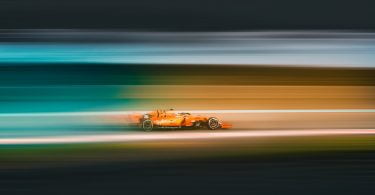What is the Halo?
The Sleek looking ‘Halo’ design, proposes a frame runs either side of the drivers heads, connecting with the front of the car using a single slim beam, which has raised the question of if visibility will be hindered. The ultimate aim of the halo, is to provide much safer coverage of the cockpit to prevent any debris from striking the drivers in the head. With safety in F1 being an ever-rising concern after Jules Bianchi’s death last year, the sport may be taking a step in the right direction with this potential Modification, which Ferrari’s Kimi Raikkonen tested out this week on the new SF16-H car.
EXCLUSIVE VIDEO: Ride onboard as Vettel trials ‘Halo’ concept in Barcelona >> https://t.co/FP76ZbUCcD #F1Testing pic.twitter.com/LPpEGeRtpk
— Formula 1 (@F1) March 4, 2016
The Halo – Yes or No?
Where better to start than the reigning World Champion. Lewis Hamilton, who will be going for his fourth World Championship this year, has slammed the idea of the halo-style design this week, by describing it as the “worst-looking” modification in Formula 1 history. The 31 year old made his opinions clear on Instagram by posting “please no, “I appreciate the quest for safety but this is Formula 1, and the way it is now is perfectly fine”.
At the other end of the Spectrum, whilst speaking to the BBC, Ferrari’s Sebastian Vettel says the Halo design can be as “ugly as possible” as long as it helps save lives. There would be little argument from Hamilton or infact anyone regarding the design if it did begin to lead to Formula 1 becoming a safer sport. The FIA have proposed the idea to come into place, however it is becoming ever more likely that if it does, it will be introduced at the start of the 2017 season.
The debate between drivers this week regarding the halo have gone on and on, ranging from “F1 needs to remain sexy and attractive” to “Head safety is a weak link in the sport”. The debate between drivers will continue to go on, but no one is to know what will happen in the course of the season. The design has the potential to be lifesaving, and if the halo did prevent debris from entering the cockpit, it would be seen by everyone inside and outside the sport as game changing. Realistically, the sport will judged on if safety comes first, as a opposed to how “sexy” a car is, so be it this is still important in a sport which has glamour, class and almost unlimited finances in abundance.
#sebastianvettel tests the #halo concept during the final day of #F1Testing for @ScuderiaFerrari #F12016 #F1 pic.twitter.com/YpxkFliU72
— sutton-images.com (@suttonimages) March 4, 2016
The current issue with the design however remains obvious: vision. The frames current design means a small beam runs directly in front of the eye line of the drivers, which would be largely contradictory to the safety issues of debris if the design remains this way. Raikkonen was the only driver to test the concept in Pre-season testing and he said the vision was “OK”. The design can be altered however, and it is an issue the FIA are likely to look into.
No one can forget the famous Ayrton Senna tragedy, when his car collided into a concrete barrier back in 1994. In fact, this was the last death that Formula one has seen, and safety has been a priority in Formula one, clearly shown by the amount of effort that goes into race-weekend safety preparations. However, Jules Bianchi’s death was almost a reminder, that in a sport where cars reach 200+ mph, and experience 3-5g of G-force per face, there is always the potential for disaster, which is why the Halo seems to be a no brainer going forward in the sport, whether the drivers are in favour, or not.
What do the Regulations say?
Before the drivers even get onto the starting grid, they must go through various tests in order to see if they are fully prepared for the race. Within these tests, or ‘regulation checks’, is a law stating the drivers head must be 70mm under an imaginary line drawn from the chassis to the roll hoop.
If the car is to flip within the race, although not the halo’s primary purpose it can act as almost a cage for the drivers, taking the pressure of the drivers head when upside down. The head of the driver would then not be making direct contact with the ground, which is a much safer option in comparison with the current open cockpit system. This is just one other reason why the carbon fibre design must be an option, well in consideration for the future of the sport.








